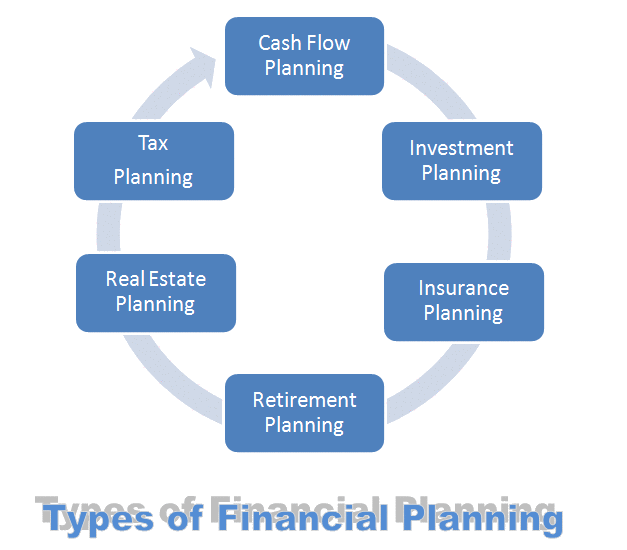Experts state that strategic financial management simply involves distributing cash to a company or business as needed. The organization’s objectives dictate the terms of distribution. The approach primarily emphasizes fundraising. It may broaden to include other instruments, institutions, and behavioral patterns. It also covers the legal and accounting relationships that a company has with the people who provide its funding. Capital raising is only one aspect under nature of strategic financial management, which includes a slew of other actions and choices.
Every contemporary corporation relies on money as its lifeblood because it drives every aspect of our economic activities. We need pooled resources to run a business. Money is essential for gathering physical and material resources for productive activities and commercial operations. It also influences sales and compensates providers of physical and monetary resources for their efforts. As a result, strategic financial management is a critical organic function of a company.
Nature of Strategic Financial Management
As a nature of financial management, investment choices have risen to the top of the priority list in a company’s decision-making process. These decisions are based on the company’s forecasts for growth and profitability. The choice aids the company in achieving its long-term objectives of survival, expansion, product market share, and production leadership, among other things. Let us take an overview on nature of strategic financial management in depth below.
Dividends Options
Dividends are yet another important decision in the nature of strategic financial management. The strategic financial management team must decide. They must decide whether to disperse all profits or to keep a portion. The team should consider whether the company or its shareholders can make better use of the capital. They should consider whether they can create a higher rate of return. This consideration should guide their decision-making process.
The market price of shares, earnings trend, shareholder tax status, cash flow position, future growth requirements, and Companies Act restrictions influence a corporation’s dividend policy. The finance manager must consider these factors when deciding on dividend payout ratio, bonus payments, and interim dividends.
Financial Option
After making an investment choice, the next step in strategic financial management is to raise the necessary funds to complete it. The firm’s balance sheet shows that it has received long-term loans from various sources such as shareholders (both ordinary and preferred), debenture holders, financial institutions, banks, and others.
The rules governing the issuing of preferred shares, debentures, and loan instruments differ from one jurisdiction to the next. The finance mix, also known as the capital structure, regulates the amount of money that may be raised from various sources. It is necessary to determine the optimum finance combination for a firm. Take a look at the company’s financial structure, as well as its short and intermediate-term financing plans.
By using capital budgeting, long-range planning, assessing alternative uses of money, and establishing measurable financial performance standards, top-level policy creation is now totally integrated with financing choices. To what degree does a company’s financing policy have an influence on the cost of equity capital? Should corporate funds be allocated to specified objectives or withheld from such uses?
In the business sector, senior management is largely concerned with the planning of cash sources and uses, as well as the evaluation of performance and profitability. The development of computer-assisted measurement tools has helped improve efficiency in capital allocation choices. A successful nature of strategic financial management program leads to collectively making investment selections and financial decisions. Despite the diverse scope of these judgments, they remain intertwined.
Capital Structure
Financial factors, as previously indicated, include finding the optimal equity-to-debt ratio and striking a balance between fixed and working capital requirements. The goals of financial management are to maximize returns on investment while minimizing risk exposure. To determine the most effective capital structure for a business unit, companies frequently employ risk and return analysis in conjunction with other methods. Debt increases the riskiness of a company’s financial structure by increasing the amount of money owed.
The analysis of a company’s earnings before interest and taxes, variable expenditures, and contribution constitutes earnings before interest and taxes. Financial management encompasses investigating operating leverages. Financial leverage also determines the future earnings per share for shareholders. Both aspects together constitute combined leverage.
Criteria Options
In strategic financial management, investment decisions and financing decisions can be handled independently. A fair decision criterion should achieve certain objectives. It must distinguish between acceptable and unacceptable concepts. Decision-makers should follow the “Better and Bigger” notion and the “Bird in Hand is Better than Two in the Bush” philosophy.
The first notion implies that greater is better, while the second suggests that early is better than later. These notions depend on the rare circumstance that “all other things being equal.” However, in practice, they are strictly adhered to, especially in capital planning and determining project financing bids’ cost of capital.
Investment Actions
Investment is the use of money with the purpose of making a profit or receiving a return. Investors anticipate changes in profits or gains in a company’s securities on the stock market, which the capital market encompasses. A finance manager, as part of strategic financial management, determines the allocation of the firm’s resources. Additionally, they decide who will be responsible for making financial decisions for the company. This responsibility involves creating physical assets with the money, acquiring business shares or debentures, or purchasing consumer durables such as a building.
A marketing manager may desire a new show room, a new production manager, or a new lathe in order to assure consistent and successful manufacturing. Furthermore, top management may decide to enter a new market, such as expanding a textile firm into the electronics industry. All of these ventures are profitable endeavors. However, funds are limited. As a result, accepting one concept while rejecting others preserves the status quo.
In strategic financial management, investment decisions focus on accumulating tangible assets over time. Several elements need consideration when making these decisions. These include the necessity of the investment, factors influencing investment decisions, and criteria for assessing them.
Capital Budgeting
Capital budgeting is required in order to make investment decisions. In the corporate world, capital budgeting and investment decisions are almost similar. Increasing the value of capital assets now will generate revenue tomorrow, which will pay expenditures. Investment decisions are essentially financial commitments undertaken in the hope of reaping future economic benefits. It is necessary to make a decision between existing resources and investment opportunities.
The company enjoys seizing economic opportunities. When choosing equipment, we must base investment decisions on equipment quality and the latest technological advancements. Acquisitions, reorganizations, and rehabilitations all involve economic and financial considerations. They each affect the nature of strategic financial management financially and economically.
Replacing an existing asset, plant, machinery, or facility aims to leverage new technology, reduce production costs, enhance labor efficiency, and achieve other benefits. Another area of investment involves capital re-allocation. This practice aims to better align capital with production policy.
- Acquire, hire, or lease a piece of property.
- The cost of capital.
- Company failures and reorganizations, as well as growth and contraction.
- The management of current assets and liquid assets;
When making investment decisions, the components and scope of strategic financial management are the elements that influence the decision. While making optimal investment decisions, one must take into account the following considerations. These considerations include the fact that capital is a limited resource with a high cost of production.
- Financial analysis revolves around issues concerning capital availability and the cost of capital. These issues form the center of attention.
- A set of rules exists within financial analysis. These rules are utilized to choose a project for implementation and to optimize revenues. The process primarily relies on logic and mathematics.
Conclusion
The nature of strategic financial management involves making decisions about investments, financing, and dividends in line with the company’s goals. Shareholder interests are crucial in making these choices. The primary aim is to enhance shareholder wealth, which relies on both increased net worth of invested capital and reinvested earnings for company growth and performance. This motivation drives them towards success. Consequently, the market adjusts stock prices accordingly, based on various factors. As a result, it is possible to analyze the type of investment, financing, and dividend decisions made.







